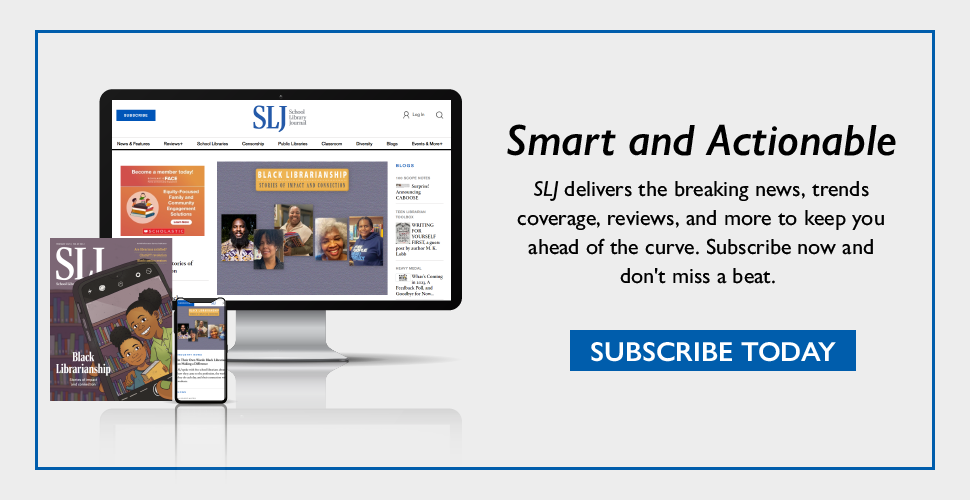Collection Development: Reflecting Our Communities | #OwnVoices: Three Takes
A children's materials specialist provides practical advice for building a relevant #OwnVoices collection for kids.
 The toughest part of my job as the children's collection development specialist for Queens (NY) Library—a large library system serving one of the most diverse counties in the United States—often is creating and maintaining collections that reflect the communities we serve.
The toughest part of my job as the children's collection development specialist for Queens (NY) Library—a large library system serving one of the most diverse counties in the United States—often is creating and maintaining collections that reflect the communities we serve.
Also read:
Conversations in the Classroom
Elisa Gall, director of library services at a Chicago independent school
Imagine Yourself a Young Reader in the Margins
Ebony Elizabeth Thomas, assistant professor, University of Pennsylvania Graduate School of Education
Reviewing and acquiring
In addition to having diverse literature, we need to look at how diverse our reviewing pool is. Also, when reviewers are unfamiliar with a particular group being represented in a book, it’s important that they take the time to learn about it. Just as we’d check for factual errors when questioning something in a nonfiction title, we need to explore things that trouble us in fictional works about people and cultures different than ours. While #OwnVoices books must find homes in our collections, this is sometimes easier said than done. More #OwnVoices titles are available through mainstream publishers, but a lot are not created through traditional channels. Most self-published titles that come across my desk are written by authors of color. Sometimes, those titles will come with a note explaining that the author chose to self-publish when he or she noticed a lack of mainstream titles featuring characters of color. Bureaucratic snags can, on occasion, make it difficult to acquire these items. These may include things like being limited to purchase materials only after they have been favorable reviewed in professional trade journals or availability from certain approved vendors. These roadblocks may be circumvented by discussing the issue with people higher in the organization. Perhaps it’s as simple as getting permission and going through the process of adding a new vendor to your library’s database. Some books aren't reviewed by traditional sources, which is a problem when collection policies require professional trade reviews. It can take librarians more time and effort to find these titles. They may not be marketed or advertised in the places we’re used to looking. Librarians tend to read the same newspapers, review journals, blogs and newsletters. The content and the ads help us gain insight about the projected popularity of an item, but they don’t always feature items published by smaller houses or self-published authors. I don’t know if any selector has discovered a definitive solution to this problem. I do know that in the past I have found things like SLJ’s Indie Voices column helpful. It has also been helpful to read blogs recommended by bloggers I like. A Fuse #8 Production can lead you to The Brown Bookshelf. Reading While White can lead you to Latinxs in Kid Lit. Since I started in this position seven years ago, we’ve move forward on the path to solving some of these challenges, but we are still much closer to the beginning of the journey than the end. I credit some of the recent movements we’ve seen to diversify children’s literature, such as #OwnVoices and #WeNeedDiverseBooks. Publishers are setting up imprints devoted to marginalized people, such as the Salaam Reads imprint at Simon & Schuster. More people are talking about diverse voices and reviewing items they like, which helps me buy them. We are seeing more self-published titles highlighted by professional trade journals. But the demand still far exceeds the supply. We need so much more.Christine Scheper is the children’s materials specialist for Queens Library. She is an active member of ALSC and has served on a number of committees, including the 2016 Newbery Committee.
RELATED
RECOMMENDED
CAREERS
The job outlook in 2030: Librarians will be in demand
CAREERS
The job outlook in 2030: Librarians will be in demand
ALREADY A SUBSCRIBER? LOG IN
We are currently offering this content for free. Sign up now to activate your personal profile, where you can save articles for future viewing






Add Comment :-
Be the first reader to comment.
Comment Policy:
Comment should not be empty !!!